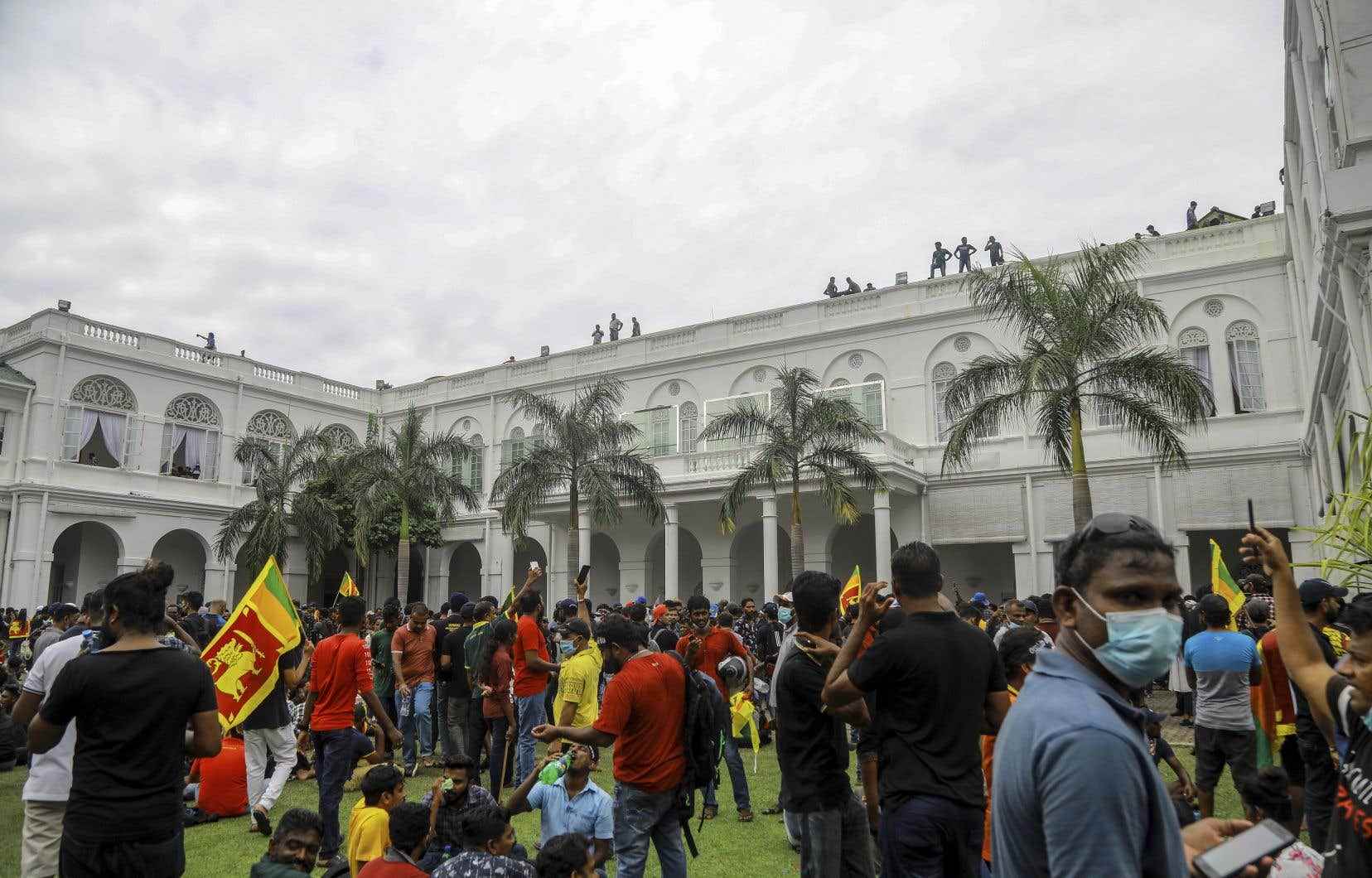Sri Lankan President Gotabaya Rajapaksa fled his Colombo palace on Saturday minutes before it was stormed by hundreds of protesters accusing him of being responsible for the country’s catastrophic economic crisis. and wanting to oust him from power.
Prime Minister Ranil Wickremesinghe, who is next in line if Mr Rajapaksa resigns, immediately called an emergency cabinet meeting to discuss a “swift resolution” to the crisis. In a statement, he invited the leaders of the political parties to join this meeting, and also asked that the Parliament be convened.
Hundreds of thousands of people were gathered in the surrounding streets, according to police estimates, while several hundred managed to enter the palace, just after the president fled.
“The president has been escorted to a safe place,” a defense source told AFP. “He is still the president, he is protected by a military unit,” added this source, according to which the soldiers guarding the official residence fired in the air to dissuade the demonstrators from approaching until Mr. Rajapaksa be evacuated.
In the presidential pool
Local television channels showed images of hundreds of people climbing the gates of the presidential palace, a building dating from the colonial era, located by the sea and symbol of power in Sri Lanka.
Some protesters streamed videos live on social media showing a crowd milling around inside the palace, some even taking a dip in the presidential swimming pool or lying amusedly in the bedrooms of the residence.
The protesters also took over the offices of the presidency, located nearby and in front of which demonstrators have been camping for three months.
Government officials said they were unaware of Mr. Rajapaksa’s intentions after he fled. “We are awaiting instructions,” a senior official told AFP. “We still don’t know where he is, but we know he is with the Sri Lanka Navy and is safe.”
Private TV channels showed a convoy of official-looking vehicles at Colombo International Airport, but no confirmation of Mr Rajapaksa’s possible departure from the country has been provided.
Tens of thousands of people had earlier taken part in demonstrations to demand the resignation of Mr. Rajapaksa, held responsible for the unprecedented crisis which is hitting Sri Lanka and causing galloping inflation as well as serious shortages of fuel, electricity and of food.
The United Nations estimates in particular that around 80% of the population skips meals to cope with shortages and soaring prices.
The police tried to disperse the huge crowd gathered in the administrative district of the capital. The main hospital in Colombo reported three people injured by gunshots and 36 others suffering from breathing difficulties due to the massive use of tear gas.
“Requisitioned” trains
On Friday, the police had imposed a curfew to try to discourage protesters from taking to the streets. But the measure was lifted after threats of legal action against the police chief from opposition parties, human rights activists and the country’s bar association.
The curfew had been largely ignored by protesters anyway, some of whom even forced rail authorities to take them by train to Colombo on Saturday to take part in the rally, officials told AFP.
“The curfew has not had a deterrent effect. He actually encouraged more people to take to the streets in defiance,” the defense official said. “Passengers requisitioned trains to reach Colombo”.
Even as the country has nearly exhausted its meager petrol reserves, protesters, backed by the main opposition parties, have also hired private buses to travel to the capital.
According to the authorities, some 20,000 soldiers and police had been dispatched to Colombo to protect the president.
The UN had urged the Sri Lankan authorities and the demonstrators to ensure that the rallies on Saturday took place in a calm environment.
By May, nine people had been killed and several hundred injured during unrest in the country.
Sri Lanka defaulted in April on its $51 billion foreign debt, and began bailout talks with the International Monetary Fund.
This crisis, of an unprecedented scale since the country’s independence in 1948, is attributed to the Covid-19 pandemic which deprived this island of 22 million inhabitants of the currencies of the tourist sector and was aggravated by a series bad policy decisions, say economists.
